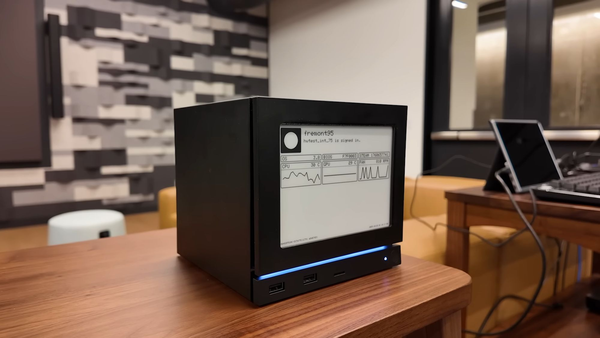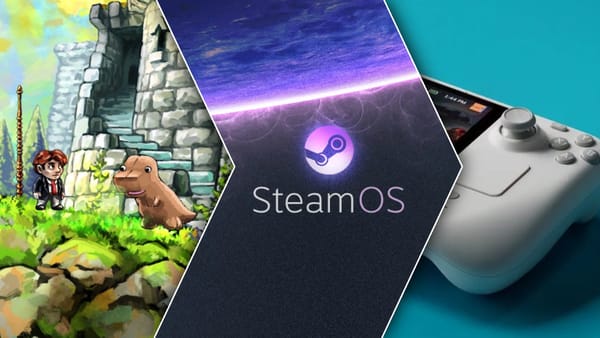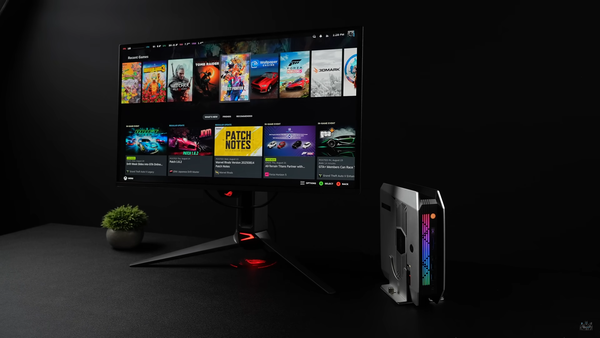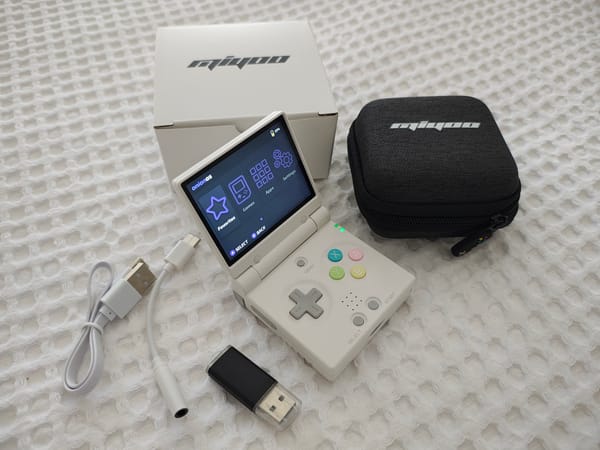Let's compare the DAY ZERO Steam Deck to the Q3 Deck.

About a week ago, the Steam Deck that I originally reserved when reservations first went live arrived here at the Heavy Element studio. Emily and I posted a video about getting it:
Don't forget to get subscribed to our second channel!
But immediately I started noticing little differences between our new Steam Deck and the one that we've been playing for months. Yes, Valve sent me a Steam Deck just a few days before they shipped to everybody else. It's something that I'm exceptionally grateful for, and because of that, I got my first-hand look at day one hardware.
It has had its ups and downs, and I've been—let's be honest—relatively obsessed with comparing the two Decks and seeing how they stack up, looking for every minute difference between them.
And yeah, that’s what this video is gonna be: the tiny, barely perceptible differences in the hardware from day one to today.
And kudos to Valve. I mean, their attention to detail here has been commendable, making slight alterations and tiny adjustments that contribute to the overall experience. And I think it's worth pointing out that Valve sent me this Steam Deck for free and they told me to keep it. And yet, when the time came, I decided to spend my hard-earned money to buy the Steam Deck that I reserved.
That’s my comprehensive review: I loved the Steam Deck so much that I bought it even though I already had one.
All that being the case, I thought that it would be informative to take a look at the slight hardware differences between day one and Q3 hardware. So let's jump into it.
Weight
The first thing that I noticed immediately after taking it out of the case is that the Q3 Deck is slightly lighter than the day one Deck. And when I weigh the two units, the OG Steam Deck is actually 0.2 ounces heavier than the Q3.
And yes, I took the SD card out of both of them.
So I tweeted at Lawrence Yang about this, asking why my new one was lighter than the old one. And we'll discuss why the OG Deck is a little bit heavier later on in the video.
Texture
But before we get to that though, we should talk about the other differences that I've noticed. And actually, the very next thing that I found was that my new Deck had a more distinct texture to the chassis.
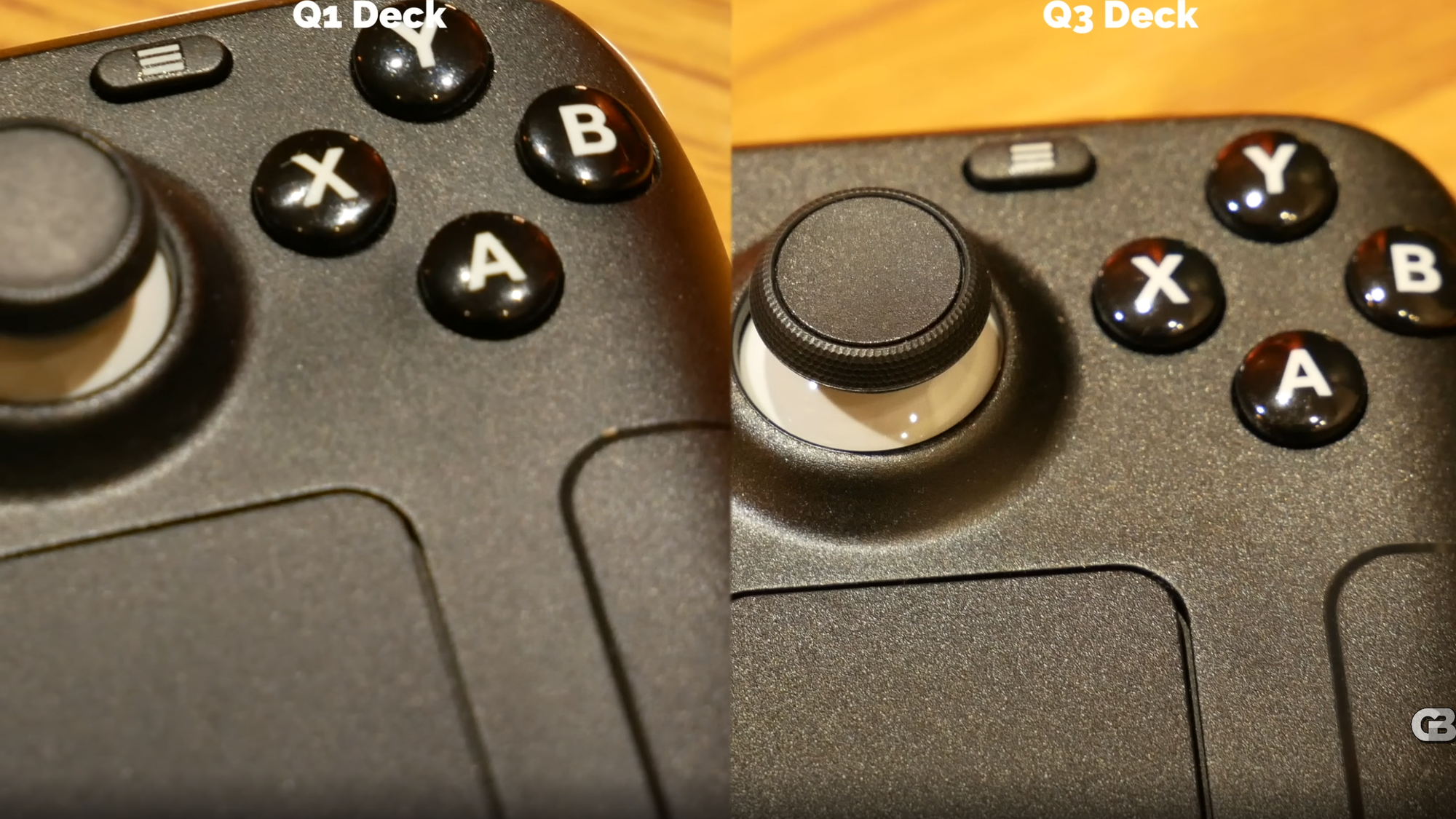
Now it's hard to capture on camera, but the difference is noticeable when you're holding it in the hand. It’s grippier, and it provides a more solid hold to the unit.
So it might go without saying that I much prefer the Deck’s new texture.
And before people head into the comments to say that “oh, the day one Deck has been worn out from too much use”—no, it really hasn’t. If my first Deck had worn out that much that fast—keep in mind, I’ve had it less than six months—if it had worn out to the point where much of the texture between the old and new is so distinct, then there has to be something deeply wrong with Valve’s manufacturing process.
Furthermore, I know that it's not that the Deck is worn out because my first Deck has a uniform feel across its entire chassis. And the same is true for my Q3 Deck.
What’s interesting though is that the trackpads have more texture as well.
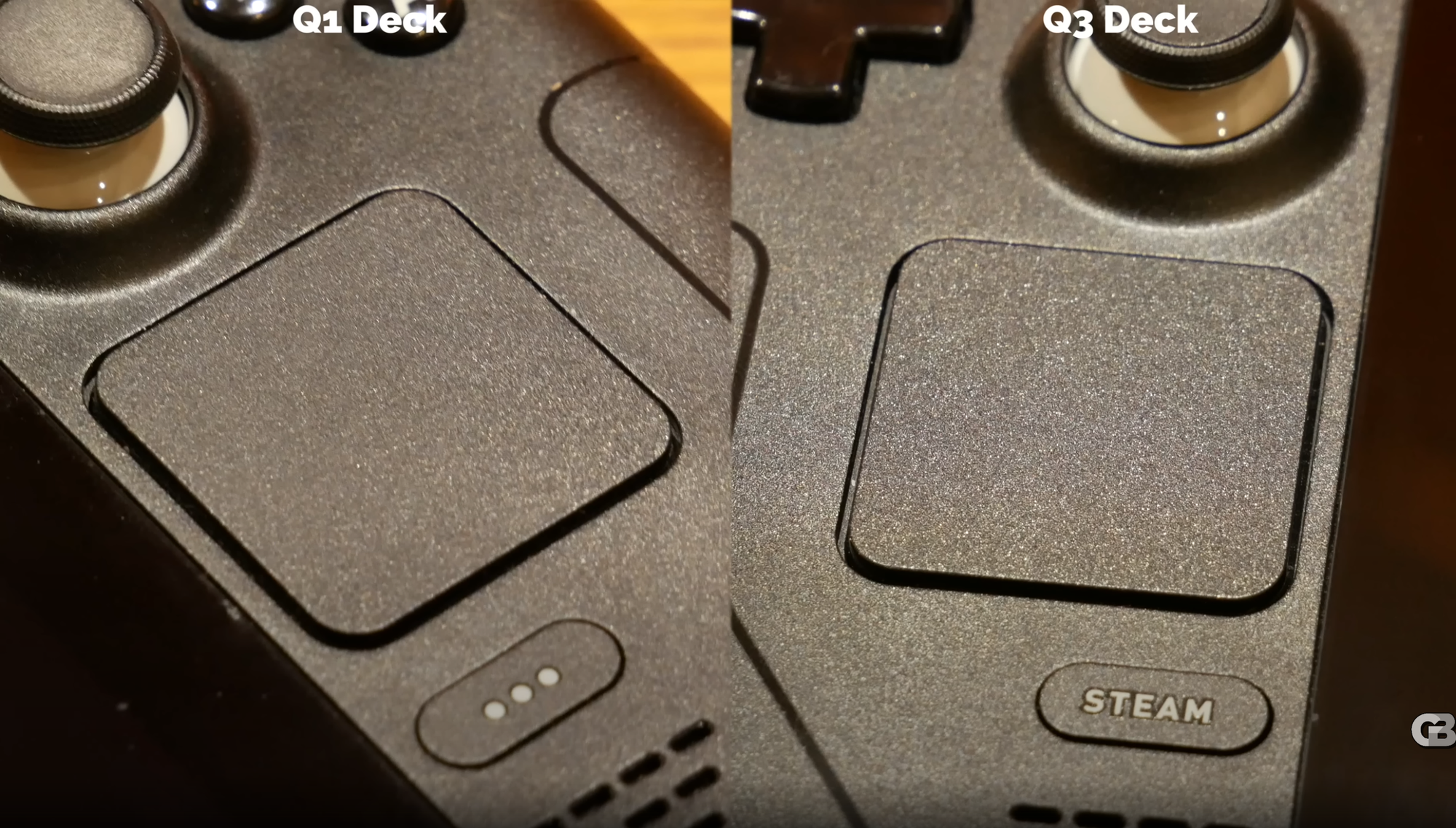
This is slightly less obvious than the chassis’ rougher feel at first touch, but I can sense a small difference. And it is definitely real. And asking multiple people to touch both Steam Decks’ trackpads has confirmed to me that it is not an illusion.
Thumbsticks
Another important improvement that I’ve found is that the original Steam Deck’s thumbsticks quickly—and kind of grossly—accumulated thumbprints or maybe dead skin. I’m not exactly sure.
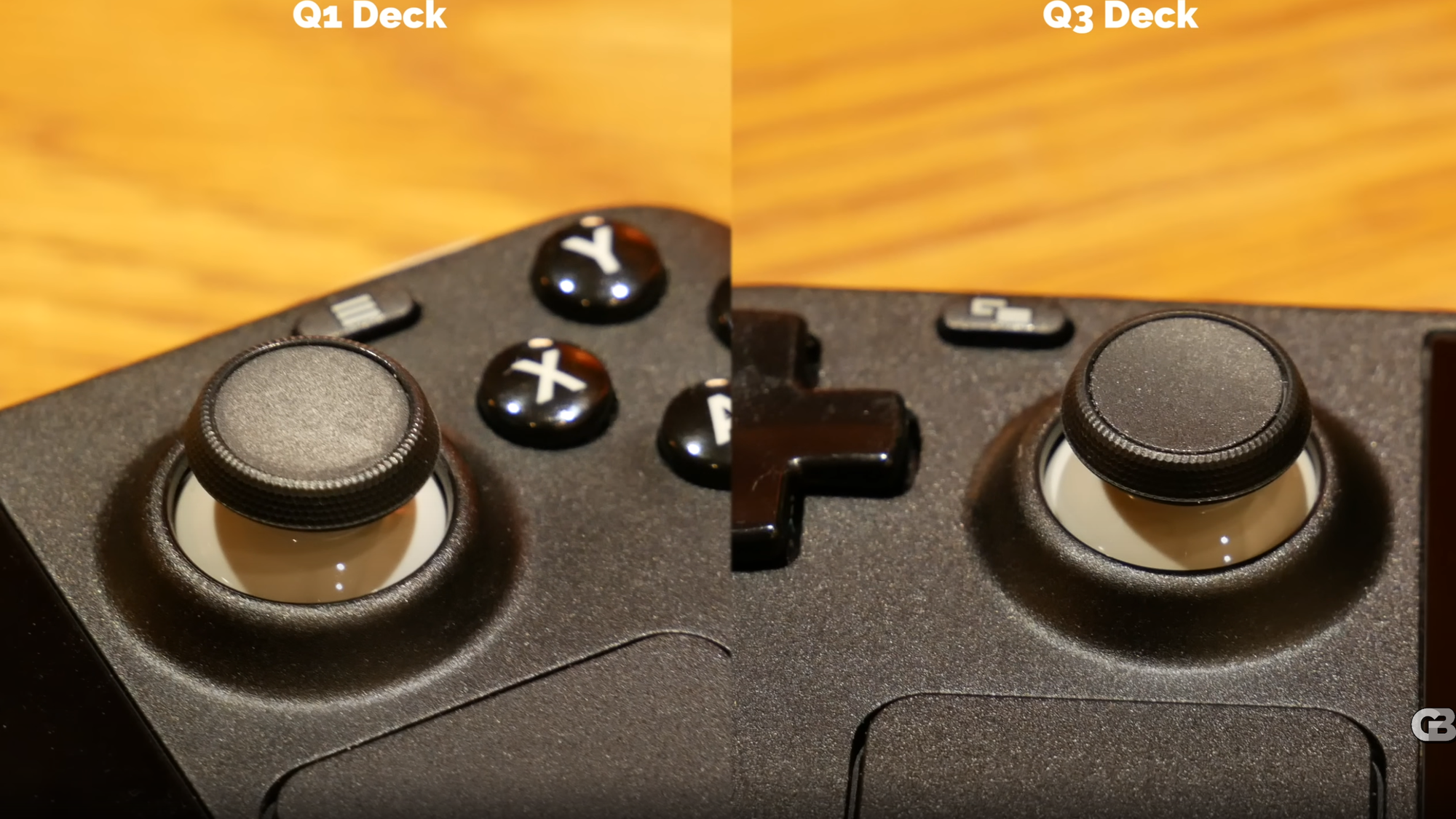
And I’m not the only one who this has happened to either. I’ve seen other people over on the Steam Deck subreddit that had this same issue. And it also happened like right away. Like as soon as I started touching and using the thumbsticks, I was leaving prints behind.
My Q3 Steam Deck’s thumbsticks are not collecting thumbprints nearly as badly as the OG Deck’s thumbsticks are.
Cooling
Next up, let’s talk about the fact that my Q3 Steam Deck has a much better fan. I can play many of my favorite games without the fan even needing to turn on while playing, while on the old one it always wants to be kinda on in the background.
Keep in mind, both devices have the same software versions running on them.
And speaking of the fans, my OG Steam Deck has a Delta fan. It’s quite loud, and now that I have the Q3 Deck to compare it to, it does have a higher-pitch sort of whine to it.
Now I have seen lots of people complain about the Delta fan’s whine, saying that it’s super loud and annoying and whatever. And I honestly—like seriously—didn’t even realize I had the noisier fan in my first Steam Deck until I got this one to compare it to.
I guess my ears just aren’t that sensitive to that kind of sound.
Now I’m not sure if this is luck of the draw, or if Valve sourced the replacement for the Delta fans, or if that’s just been fixed. I really have no idea.
But different fans could also contribute to the difference in weight.
Smell (Yes, Really)
Since we’re on the topic of fans, let’s talk about something else that’s changed.
And this could be that my OG Deck has seen a ton of usage, but the smell of the exhaust is quite different. Not bad in any way—just different.
My OG Steam Deck smells kind of like a Best Buy, and my Q3 Steam Deck smells more like a furniture store.
And keep in mind that I like both of these smells, and they’re really only noticeable when you stick your nose right up into the hot air exhaust while it’s going full bore.
SSD Differences
Another difference is that of the SSD. Both Steam Decks are the 512GB model, but the old model has a Phison PS5013-E13 and my new Steam Deck has a Kingston OM3PDPD3.
I’m not quite sure if the new Steam Deck has the quote-unquote “downgraded SSD” or not—although after thorough research I can definitely confirm that it’s not the quote-unquote “downgraded SSD.”

I ran this command to see the connection speed on the PCI bus and yeah, apparently my Q3 Deck has the Gen 3x4 NVMe. Cool.
Steam & Quick Access Buttons
Finally, I think the biggest improvement has to be the Steam and Quick Access buttons.
On the original Steam Deck, these buttons are absolutely miserable to the point where I have called them the Steam Deck’s biggest hardware flaw—much to the chagrin of many commenters who say the Delta fan was its biggest flaw.
Anyway, my Q3 Steam Deck’s Steam and Quick Access buttons are an improvement over the day one buttons. They have an actual sense of tactility to them, rather than having literally zero tactile feedback.
Though they could still use a substantial upgrade, what we have here are definitely better than what shipped on launch day.
Well, those are my observations. What are some of the things you’d like to see from your Steam Deck—either hardware or software? Let me know.

